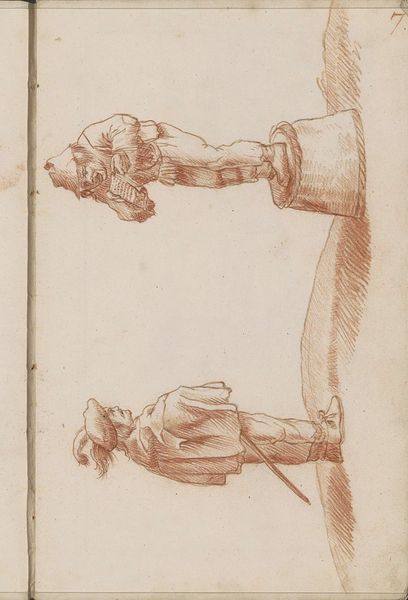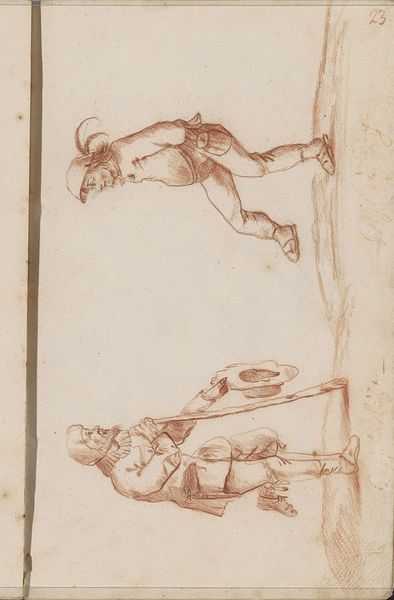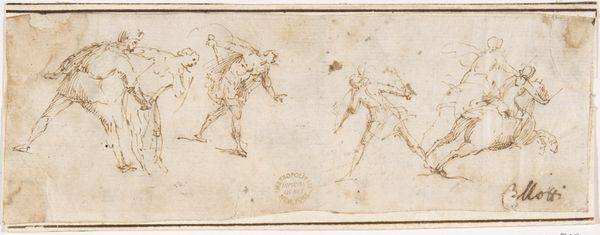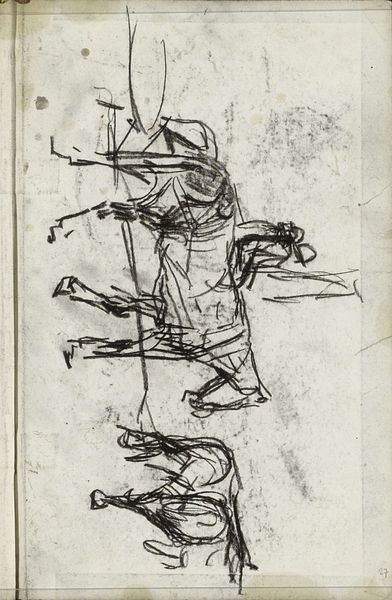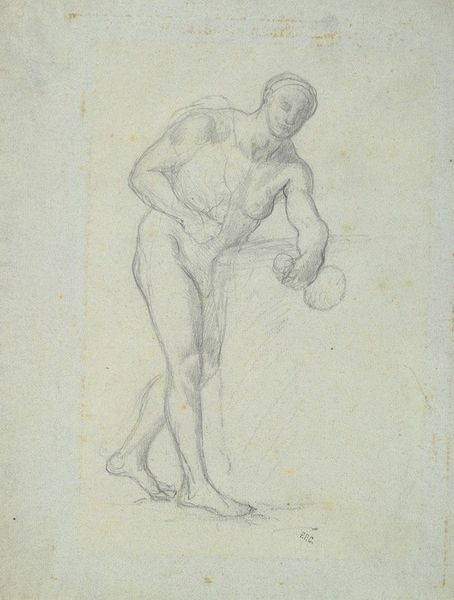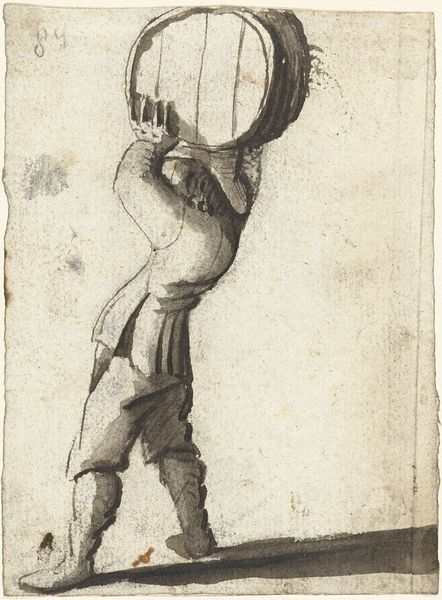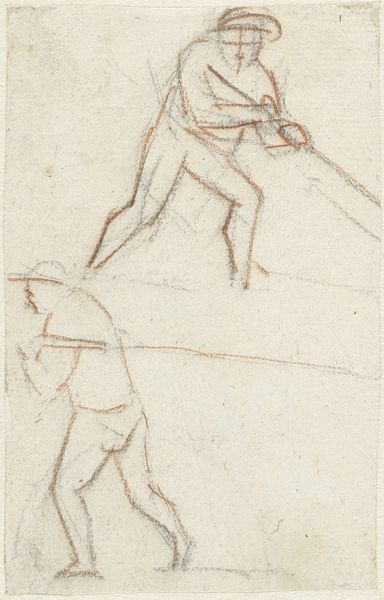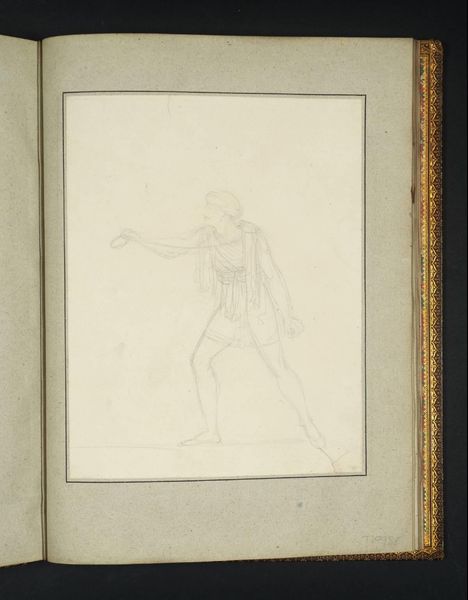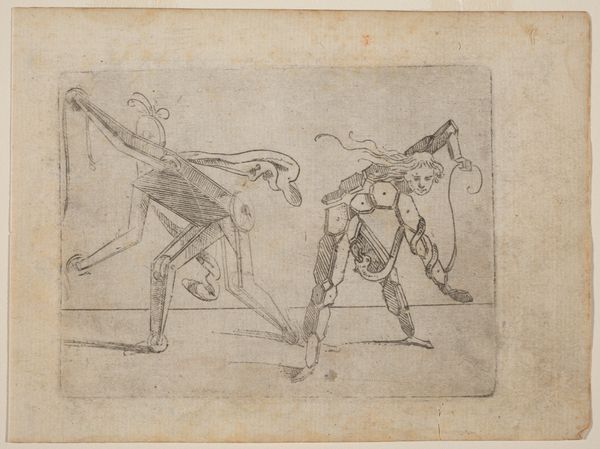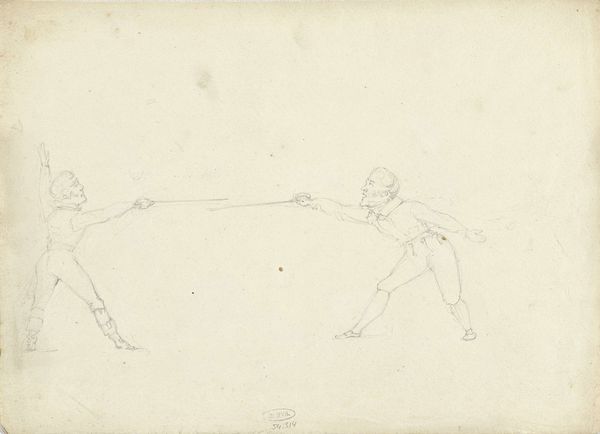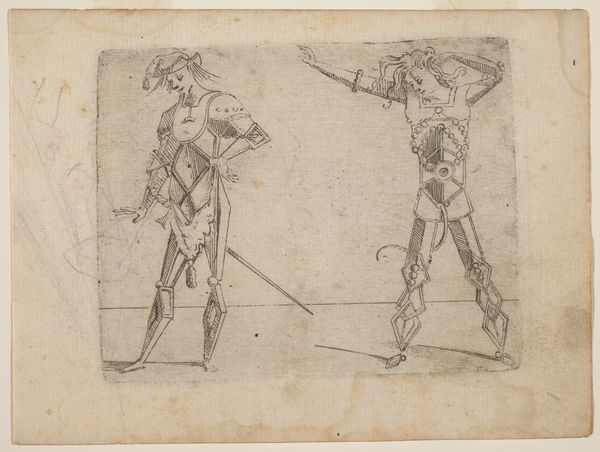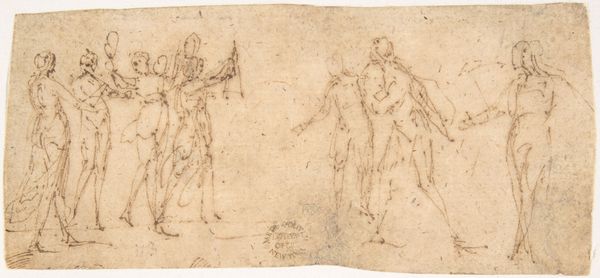
drawing, pencil
#
portrait
#
drawing
#
figuration
#
romanticism
#
pencil
Copyright: Public Domain: Artvee
Curator: This pencil drawing by Eugène Delacroix, dating from 1821, is titled "Théâtre Italien." Editor: My immediate impression is a precarious balancing act. It's whimsical, yet there's an underlying tension to the whole composition, given how simply rendered it is. What do you see in it? Curator: It immediately speaks to the fluidity of performance, capturing a world of transformation. We have what appear to be Commedia dell'Arte figures perched atop what seems to be a stage performer. It calls to mind not just theatre itself, but how symbols migrate, shift, and are reimagined across time. Editor: Considering its Romantic context, it is important to mention how Delacroix focuses our attention to his drawing process itself, allowing pencil strokes to show, documenting erasures and corrections. The materiality reminds us of the human labor and skill needed to create a piece like this in an age before mass reproduction, when each artwork required individual effort. Curator: Yes, I see that clearly—but let’s consider further those recurring character types: The Harlequin-like figure is presented as something external from the core figure. The central figure of the juggler, perhaps, evokes the very idea of controlling or subverting those traditions even while upholding them, a vital psychological dynamic that speaks to the spirit of innovation. Editor: That juggling feels like a crucial point here, as does the material reality of paper and pencil. Delacroix’s choice to show the 'working' of the art, it emphasizes production rather than perfection, making the entire performance on stage, and on paper, very apparent. Curator: A theater within a theater! Precisely! These choices make it quite an interesting piece of commentary on cultural heritage. Editor: It gives us an intriguing glimpse into the physical reality and context behind Delacroix's practice in his era. Curator: Indeed, this drawing manages to encapsulate, and reflect on the echoes of past and future—all held together in this careful orchestration of memory and skill.
Comments
No comments
Be the first to comment and join the conversation on the ultimate creative platform.
